A Complete guide to travel in Qinghai & Gansu Tibetan Region
For travelers who are fascinated exploring the Tibetan area, the Amdo area would be definitely on their must-see list. Because this land bred the most authoritative Tibetan Buddhist Academy - Labrang Monastery, the world-famous Hoh Xil (Kekexili Nature Reserve), the uninhabited area of Changtang, and the prestigious Regong Thangka art. It's also the place of the 10th Panchen Lama birth.
Among the 10 Tibetan autonomous prefectures in Qinghai, Gansu, Sichuan, and Yunnan Provinces, Amdo Tibetans occupy 7 and are mainly inhabited in Qinghai and Gansu. People here are all good at riding horses as the beautiful and vast expansive grasslands are concentrated in the Amdo area.
Table of Content:
- Qinghai Tibetan region facts
- How to travel in Qinghai Tibetan region
- Best time to travel in Qinghai Tibetan region
- Top highlights in Qinghai Tibetan region
- Itinerary recommendation in Qinghai Tibetan region
- Gansu Tibetan region facts
- How to travel in Gansu Tibetan region
- Best time to travel in Gansu Tibetan region
- Top highlights in Gansu Tibetan region
- Itinerary recommendation in Gansu Tibetan region
- Useful travel tips
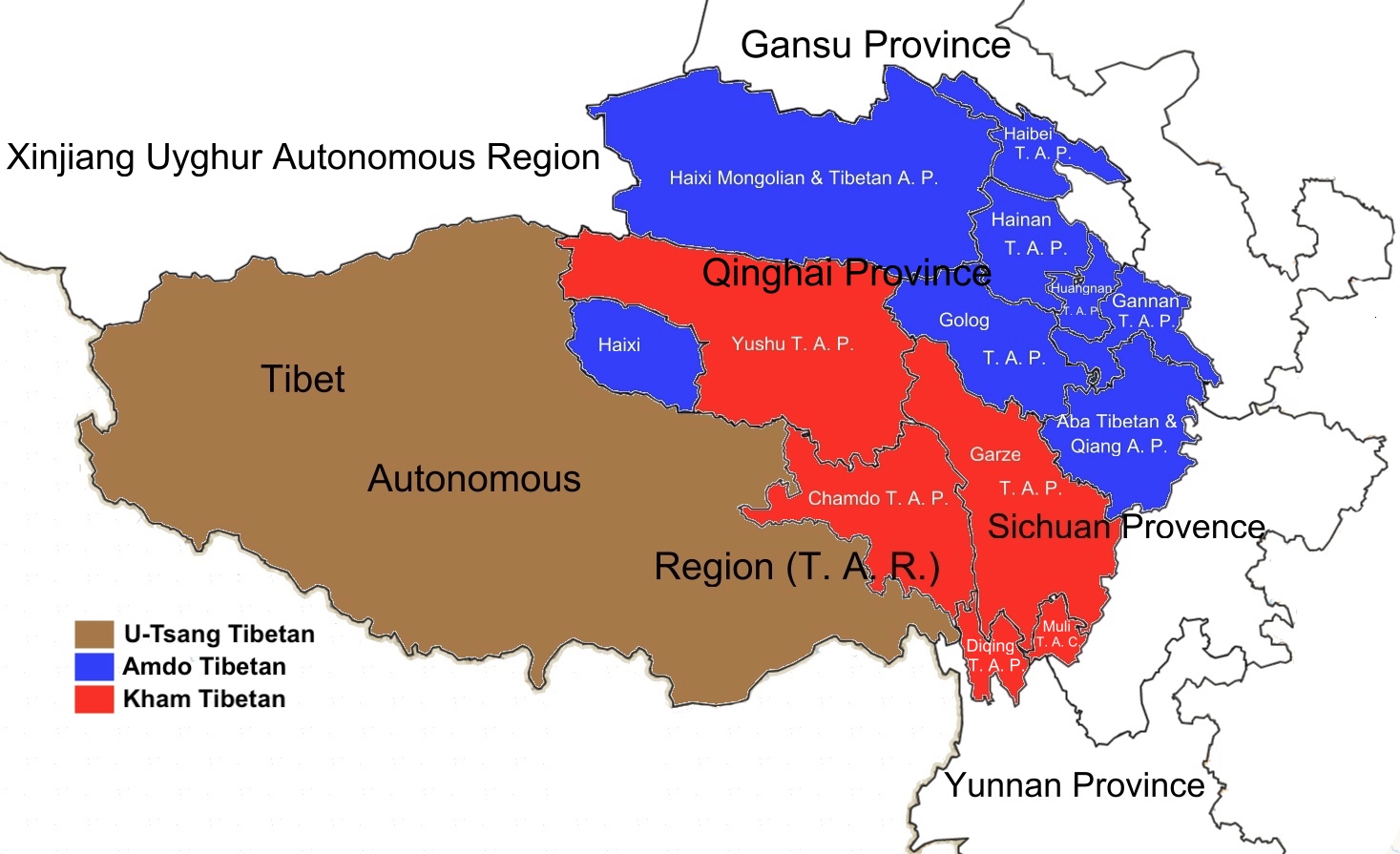

Qinghai Tibetan region facts
Covering Regions: Yushu (Gyêgu) Tibetan Autonomous Prefecture, Huangnan Tibetan Autonomous Prefecture, Golog (Guoluo) Tibetan Autonomous Prefecture, Haibei Tibetan Autonomous Prefecture, Hainan Tibetan Autonomous Prefecture, Haixi Mongolia Tibetan Autonomous Prefecture
Area: 741,200 square kilometers
Population: 2.2 million (2019)
Dialect: Amdo & Kham Tibetan
Climate: Plateau continental climate, long sunshine time and strong radiation, long winters, and cool summers, the annual average temperature is -5.1~9.0°C.
Important Cities: Yushu, Golmud, Gonghe, Tongren, Trika, etc.
Airports: Yushu Batang Airport, Golmud Airport, Haixi Delingha Airport, Haixi Huatugou Airport, Golog Maqin Airport
Train Stations: Golmud Train Station, Delingha Train Station, Menyuan Train Station
Average Altitude: Over 3,000 meters (9,843 feet)


How to travel in Qinghai Tibetan region
To get to the Tibetan area in Qinghai, the best way is to arrive at the capital city Xining first. There are daily flights and trains to Xining from big cities like Beijing, Shanghai, Chengdu, Xi’an, etc. Once you step into Qinghai, the best way to travel to the Tibetan region is by overland, of course, taking the flight to major city Yushu (Yushu Horse Racing Festival) and Maqin county (Amnye Machen Mountain trek) is also a good way to save time. The railway system is not so well developed except Qinghai-Tibet railway, train travel in Qinghai is not an option.
As the fourth-largest province located in the west, the public transportation to the remote counties/areas is rather limited, hence, the best way is to book a private car service with a professional local China travel agency. The road conditions throughout the whole province are relatively good, straight, and wide. However, high-altitude mountain passes, steep and curvy mountain roads are common, please make sure that you prepare the necessary medicines for carsickness or high-altitude sickness. The altitude of Xining is 2,250 meters, while Yushu and Guoluo Tibetan Autonomous Prefectures are above 4,200 meters, and the average elevation of other areas is about 3,000 meters.
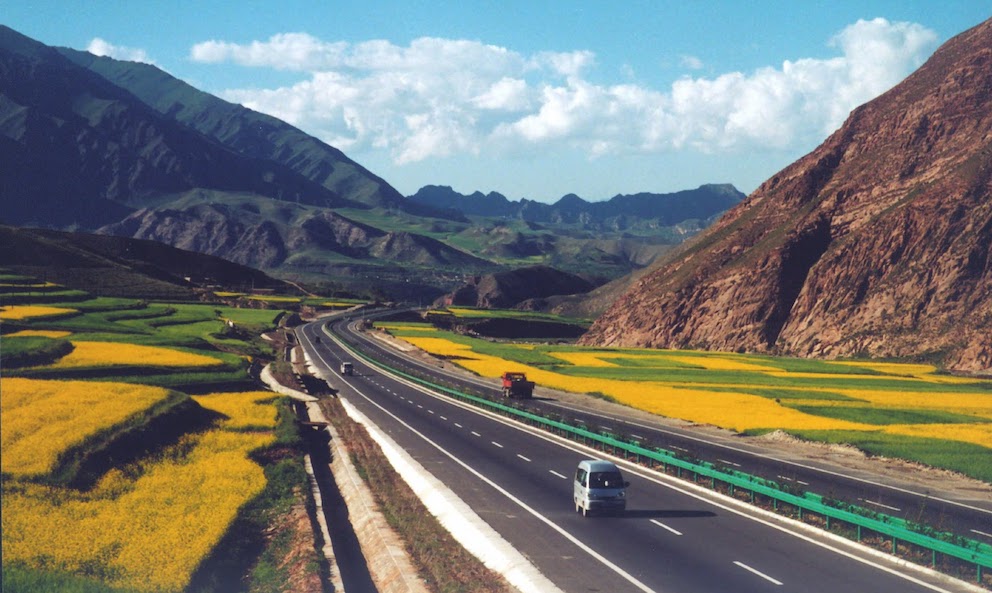
As a professional local agency with over 13 years of experience, Windhorse Tour can provide all the required vehicles (4WD Land Cruises, Suvs, Business Vans, Mini-buses, Coaches, etc.) with licensed drivers for use. Moreover, the professional English-speaking Tibetan tour guides can be easily arranged if needed. Taking a private car would make your trip hassle-free and more flexible. Stop for photo taking or other breaks can be called out anytime during the trip, the guide and driver will recommend the best shooting place for the views.

Best time to travel in Qinghai Tibetan region
The best time to travel to the Qinghai Tibetan area is from June to October, especially summer. The grassland starts turning green in mid-May, July is cool and pleasant and the daily average temperature is around 21°C. The vivid Yushu Horse Racing Festival will be held on July 25th and the rape flowers are blooming near Qinghai lake during summertime.

Top highlights in Qinghai Tibetan region
Qinghai Lake: The largest inland salt lake in China. The most beautiful period about Qinghai Lake is in July and August, the rapeseed flowers around the lake are blooming in full blossom. It's also a cycling mecca. Every summer, the ‘Tour of Qinghai Lake’ (annual professional road bicycle racing) becomes another unique feature of the lake.
Kumbum (Ta'er) Monastery: One of the six major monasteries of the Gelugpa, with a history of over 400 years. The architecture of the monastery is magnificent, and there are many Buddhist classics and treasures. It is the activity center of Tibetan Buddhism in northwestern China and enjoys a high reputation in China and Southeast Asia.
Yushu Horse Racing Festival: The traditional Yushu Horse Racing Festival starts at Yushu Jiegu Grassland on July 25th and lasts for a week. Besides the horse racing, travelers can also see the thousands of colorful tents, traditional Kham Tibetan costumes, and vivid Tibetan dancing and singing.

Rebgong Arts: Was produced in the Huangnan Tibetan Autonomous Prefecture in the 13th century and developed with the prosperity of the Rongwo Monastery. It mainly refers to painting and plastic arts such as Thangka, mural, pile embroidery, and sculpture. The best place to appreciate is in Tongren County.
Hoh Xil (Kekexili) Nature Reserve: Located in the western part of Yushu Tibetan autonomous prefecture. It is one of the nature reserves with the largest area, the highest elevation, and the richest wildlife resources in China. Hoh Xil is mainly to protect the Tibetan antelope, wild yak, Tibetan wild donkey, Tibetan original antelope and other rare wild animals, plants, and habitat environments.
Mount Amnye Machen: One of four sacred mountains of Tibetan Buddhism at 6,282 meters above sea level, located in the northwest of Golog Tibetan Autonomous Prefecture. There are large numbers of pilgrims to make a faithful pilgrimage every year. From a distance, snow peaks abruptly, just like crystal jade, bright and clear, it is very spectacular.
Caka Salt Lake: Natural crystalline salt lake, known as China’s "Mirror of the Sky". The lake is 3,100 meters above sea level, 15.8 kilometers long, and 9.2 kilometers wide. Travelers can walk barefoot on the lake to watch and photograph their own reflection. If lucky, travelers may also see the Mirages formed on the lake surface during the day.
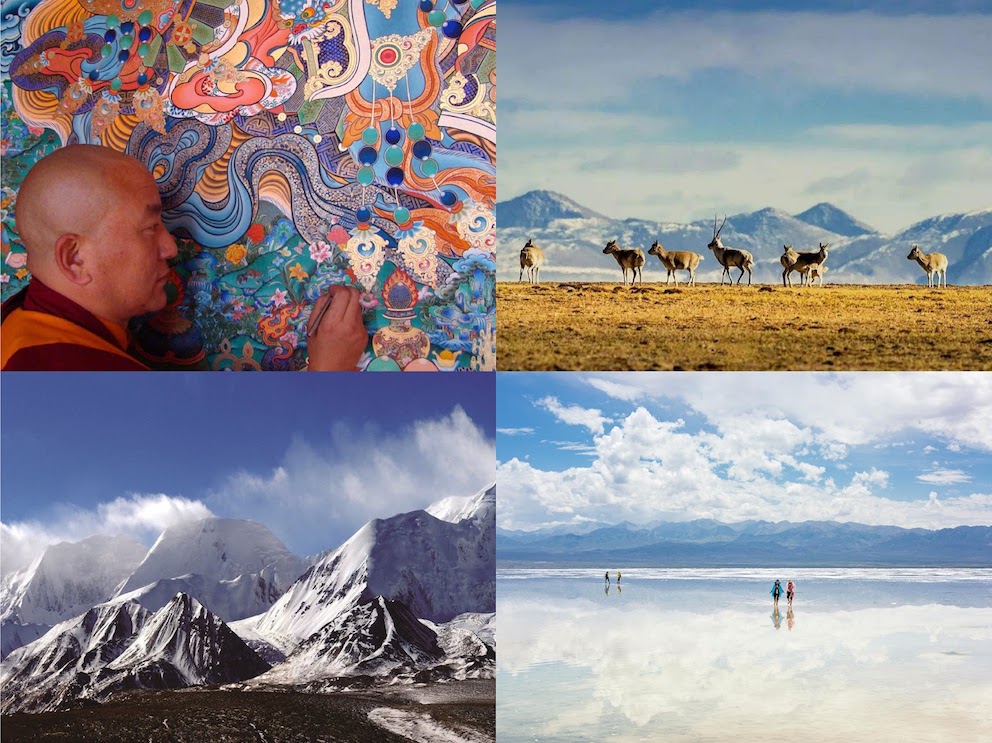

Itinerary recommendation in Qinghai Tibetan region
For nature scenery lovers, Qinghai Lake would definitely be the first choice. Traveling in summertime to enjoy the large area rapeseed flowers surrounding the lakeshore is another plus. Travelers could combine Chaka Salt Lake, Hoh Xil along Qinghai-Tibet railway, and Tibet for a 9 days trip.
For Tibetan culture lovers, the marvelous Kumbum monastery, and Tongren with Wutun and Rongwo Monasteries can be merged into a 3-4 days trip. Travelers can have a close touch with Tibetan Buddhism and the Rebgong arts - an important genre in Tibetan Buddhist painting.
For trek lovers, the holy Mount Amnye Machen trekking is an ideal option. The best time to trek on this less-touched mountain is during summer when flowers are blooming. The trekking route is quite challenging, and takes about 8 days to walk from 3,900 meters up to 5,000 meters.
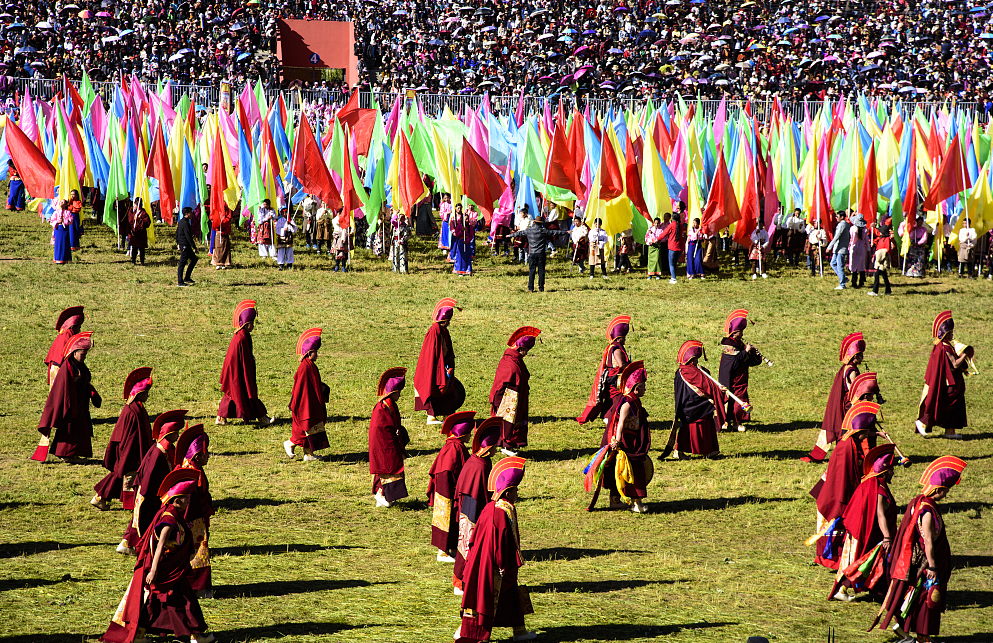
For festival lovers, the famous and traditional Yushu Horse Race festival should not be missed. As the largest Tibetan event in Qinghai, it is held on July 25th and lasts for a week every year. Everyone will be dressed in bright national costumes to participate in horse racing, yak racing, Tibetan wrestling, equestrianism, archery, shooting, ethnic singing and dancing, etc. Another must-see festival should be the Shanman Festival in Tongren (Rebgong) villages on June 17-25 in the lunar calendar. Locals celebrate this festival to show their devotion and gratitude to the Mountain God by dancing. Dance performances will last from beginning to end.

Gansu Tibetan Region Facts
Covering Regions: Gannan Tibetan Autonomous Prefecture
Area: 38,521 square kilometers
Population: 730,700 (2019)
Dialect: Amdo Tibetan
Climate: Continental seasonal climate, ample sunlight, the annual average temperature is between 1~13°C.
Important Cities: Xiahe, Hezuo, Luqu, etc.
Airports: Gannan Xiahe Airport
Train Stations: None
Average Altitude: Over 3,000 meters (9,843 feet)

How to travel in Gansu Tibetan region
The Gannan area is not far away from the capital city Lanzhou and only about 4 hours' drive from Lanzhou to Xiahe. Most cities have daily direct flights to Lanzhou, travelers can also take flights to Xiahe airport directly from Chengdu, Xi'an, Yinchuan, and Lhasa to save some time. There is no railway passing through the Gannan area.
Like Qinghai, after arriving in Lanzhou or Xiahe, it is recommended to take a private car with a licensed driver and English-speaking guide to explore the Gannan Tibetan Autonomous Prefecture. Besides driving from Lanzhou, travelers can also drive to Langmusi from Jiuzhaigou national park after sightseeing, then continue north to Xiahe. The overall road conditions in Gannan are good, but there are many mountain roads. It's better to prepare medicines for motion sickness.
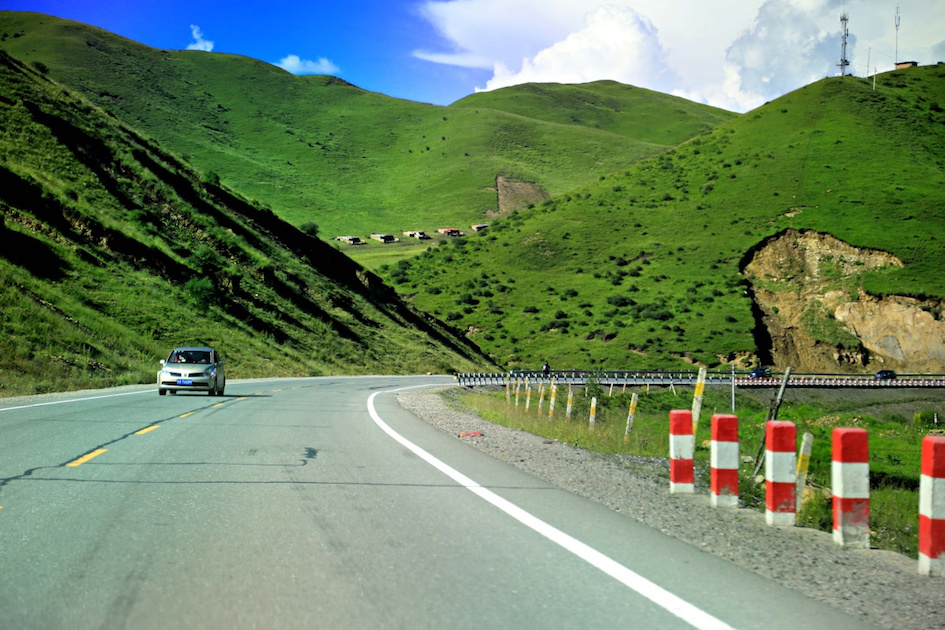

Best time to travel in Gansu Tibetan region
June to August is the best time to travel to the Gannan Tibetan area. The average temperature is 10-20°C, which is the warmest time in the whole year. There are green grass, wildflowers everywhere, and the grassland is lush and colorful. This is the best time to appreciate the gorgeous view of the plateau. Labrang Monastery Fesitval is also a good time to visit Gannan area.

Top highlights in Gansu Tibetan region
Labrang Monastery: One of the six monasteries of the Gelug Sect of Tibetan Buddhism, the world's most famous Tibetan Tantric Academy, has the most complete Tibetan Buddhism teaching system in China. There are more than 2,000 prayer wheels, and it takes at least an hour to complete all the prayer wheels. The important Molam (Great Prayer) Festival lasts from the January 3rd evening until 17th in the lunar calendar. During this time, all the monks will chant in the hall six times a day. In addition, the yak-butter sculptures made by monks in various colleges are displayed around the Great Scripture Hall, and butter lamps are provided to make them more vivid and eye-catching.
Langmu Temple: Langmu is not only the name of a town but also the name of a temple. It is a Tibetan Buddhist monastery founded in 1748 AD. The monastery is divided into two parts, Sertri Monastery is in the Gannan Tibetan Prefecture of Gansu, while Kirti Monastery is in Aba Tibetan & Qiang Prefecture of Sichuan. Its architecture is splendid and magnificent. Every main hall is topped with gilded roofs, early morning is the best time for photography. There is a sky burial platform in the back mountain of the temple, travelers can go to watch the ceremony if family permitted.
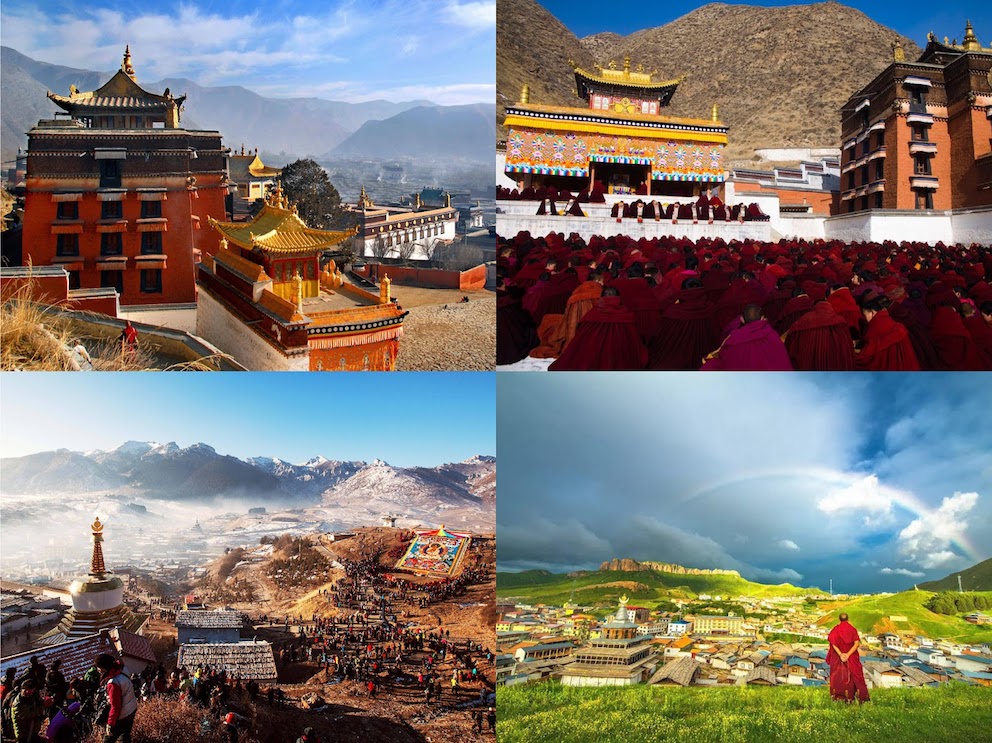
Zhagana: "Zhagana" means "stone box" in the Tibetan language, which is a completely natural "stone city". The terrain here is like a huge palace on a large scale, and a complete ancient city constructed by natural rock walls. Here you can watch the local Tibetan people's work and life and feel the simplicity and tranquility of the original Tibetan village.
Sangke Grassland: A natural pasture for the Tibetan people, with lush water and grass, green grassland in summer, and flocks of cattle and sheep under the blue sky and white clouds. The horse racing festival here is very famous. Every year on the thirteenth day of July in the lunar calendar, the seven tribes of Sangke will hold a horse race here. At that time, herders from all over the regions/towns will gather, everywhere can be seen in tents, very lively.
Milarepa Buddhist Pavilion: A representative building of the White Sect of Tibetan Buddhism. It mainly enshrines the most legendary - Milarepa, who is well known to women and children. It has a magnificent exterior, strong colors, and its interior is resplendent, full of murals. There is a prayer wheel outside the monastery.
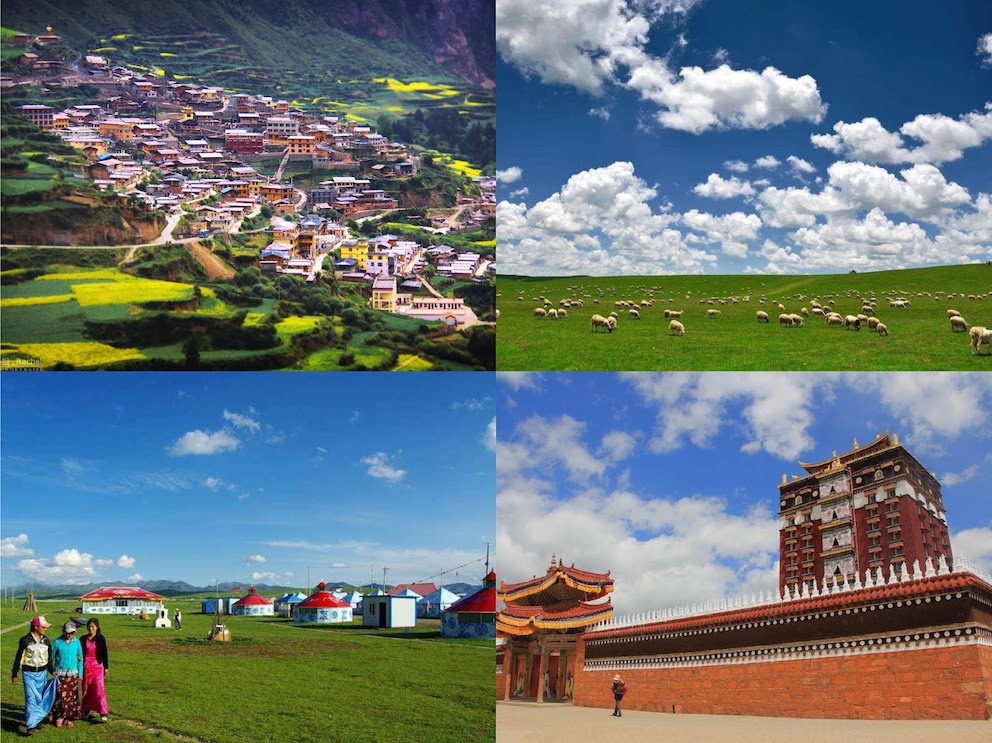

Itinerary recommendation in Gansu Tibetan region
The whole Gannan Tibetan area is perfect for a 3 days trip from Lanzhou by covering Xiahe, Labrang Monastery, Sangke Grassland, Langmu Temple together with its nearby nomad area exploring, and Milarepa Buddhist Pavilion. If travelers plan to extend the trip a bit longer for 5-6 days, they can travel continue north to visit Jiuzhaigou and Huanglong national parks, bypassing Zoige Grassland and Tangke (the First on the Nine Bends of Yellow River), which are the highlights for the northern part of Sichuan tour.
The Gannan Tibetan region can also easily combine a Silk Road tour package since the ancient Silk Road passed through many places in Gansu Province. As an important part of the Silk Road, Gannan Tibetan Prefecture not only has a vast and beautiful plateau scenery but also has a strong Tibetan Buddhist culture. Make a classical silk road trip in China from Xi'an all the way to Kashgar with the Gannan Tibetan region for about 15 days to enjoy the magnificent landscape and experience the rich history, culture, and unique folk customs.
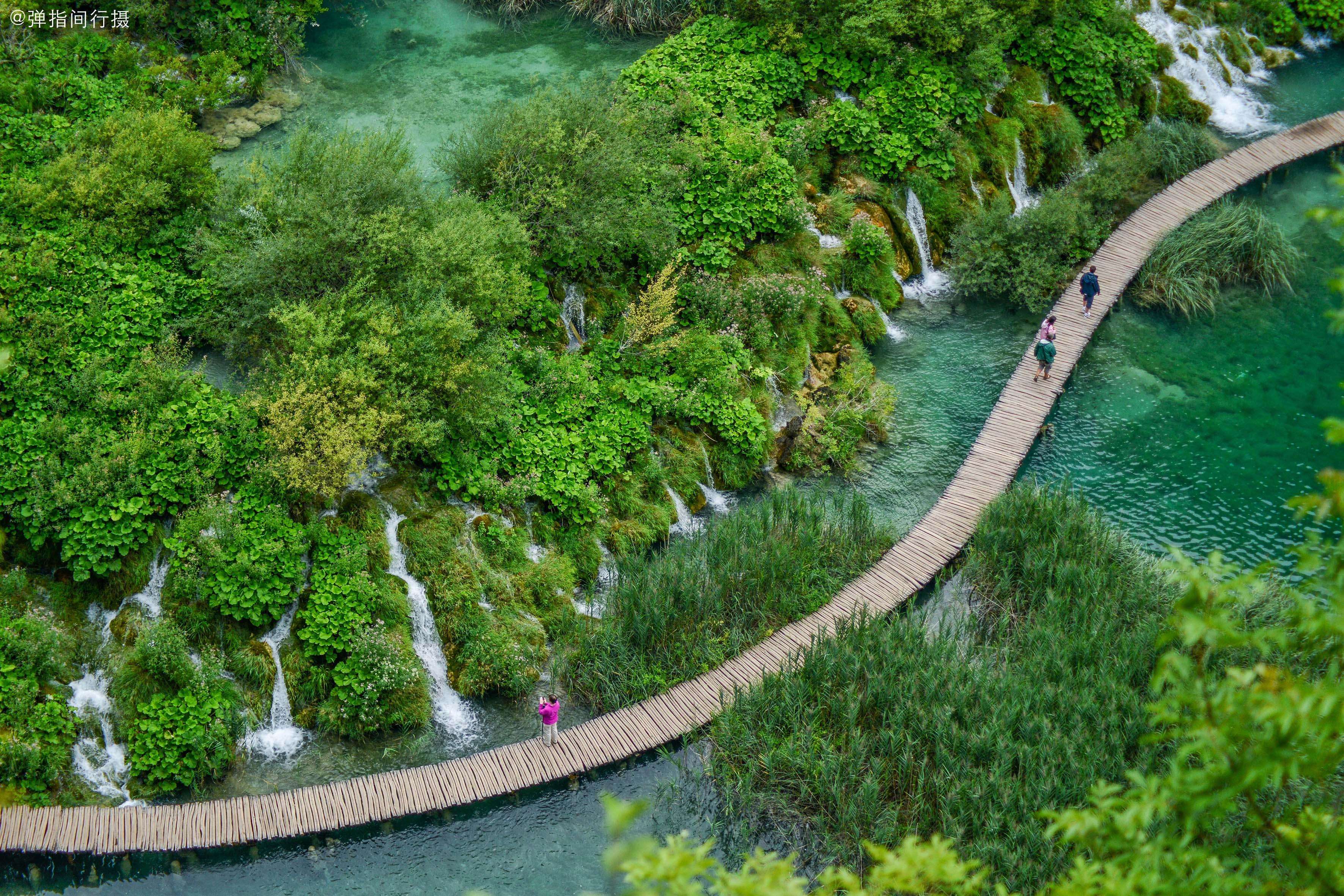

Useful travel tips
- The temperature difference between day and night is large in both Qinghai and Gansu Tibetan regions. Even in the hottest summer, the average temperature is 25°C during the day, and it can even drop to 5°C at night. Please make sure to bring warm clothes and dress in layers.
- The average altitude for both areas is over 3,000 meters, and it’s rather common for every traveler to have some symptoms of high altitude. We highly suggest travelers check with their doctors to confirm their physical conditions prior to departure. For more details, please read over 'How to avoid high altitude sickness'.
- At the plateau areas, ultraviolet rays are very strong. It is recommended to prepare high-power sunscreen, and make good physical sun protection, such as the sun hat and sunglasses.
- When you encounter religious facilities such as temples, Mani (stones) piles, and stupas, please go around in a clockwise direction from left to right.
- When visiting Tibet Autonomous Region, Tibet Permit is a required documentation for all foreign travelers. However, this permit is not necessary to visit Qinghai or Gansu Tibetan area, but only with a regular, valid Chinese visa. Due to the COVID-19, Tibet Tourism Bureau has suspended the Tibet Permits for all foreign tourists since 27 January 2020 and shut down for visiting. For travelers planning to visit Tibet recently, you may consider Qinghai or Gansu Tibetan Autonomous Region to see the snow-capped mountains, holy lakes, monasteries, devout believers, and kind Tibetan people.


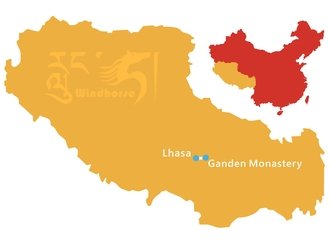
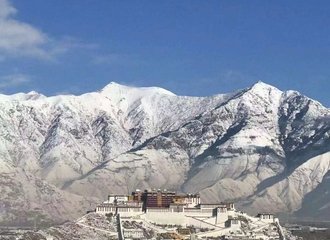
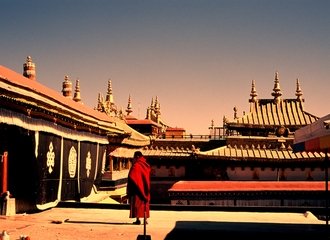
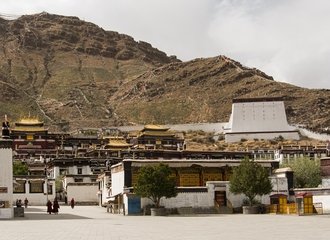
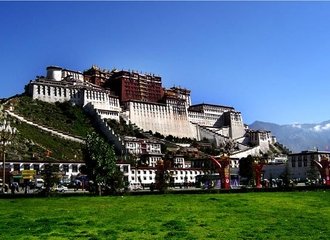
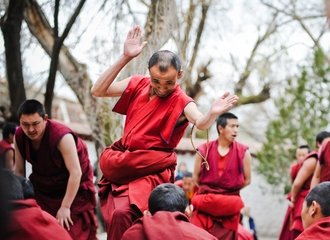
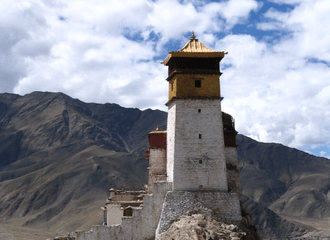
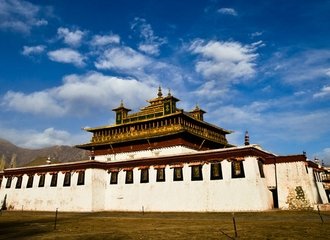
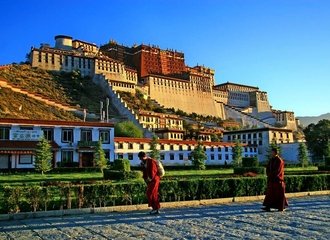

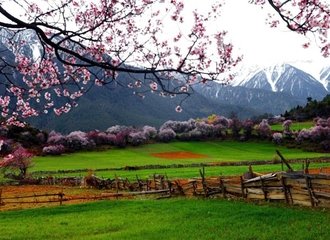
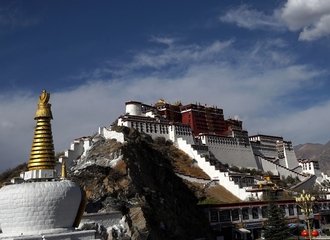
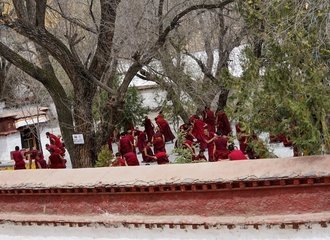
Comments
Hallo
I am interested to bring group from India in the month of march/April my group size will be between 15-20 pax.
need accommodation, transport bus ,train & domestic flight + guide. meal breakfast & dinner.
Could you send me the costing. These are the route which i like to take them. we want to visit some part of Tibet which do not need permit. New Delhi - Shanghai,
Beijing
XiAn
Gansu
Qinghai
Labrang Monastery
Sichuan
Yunnan-Hanoi flight-Delhi